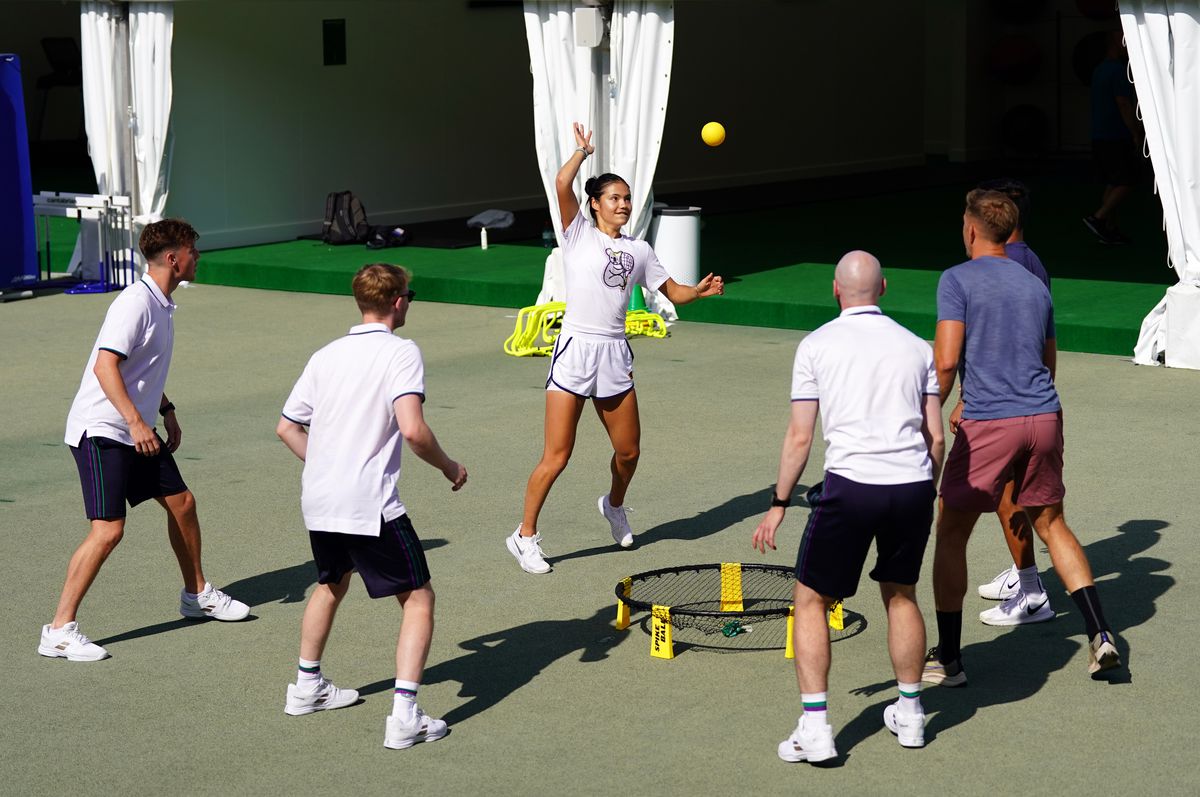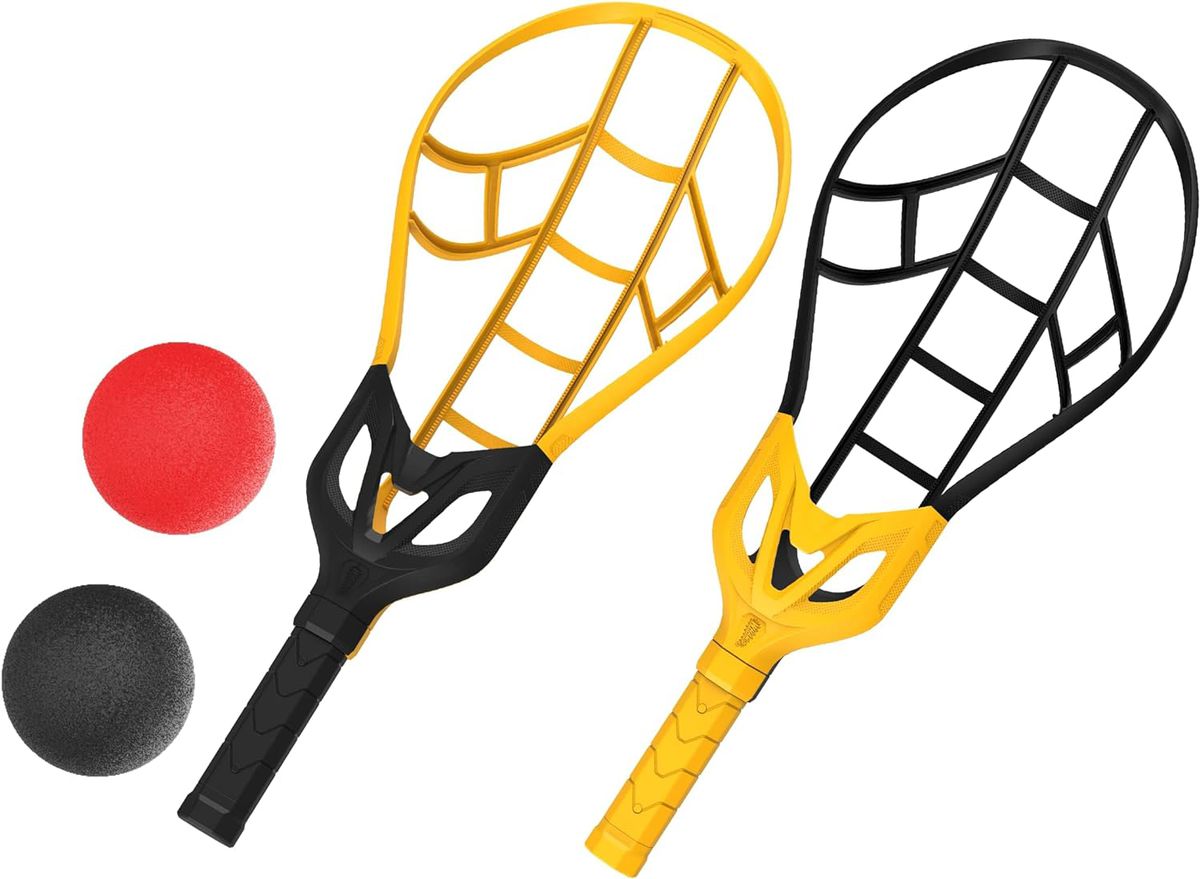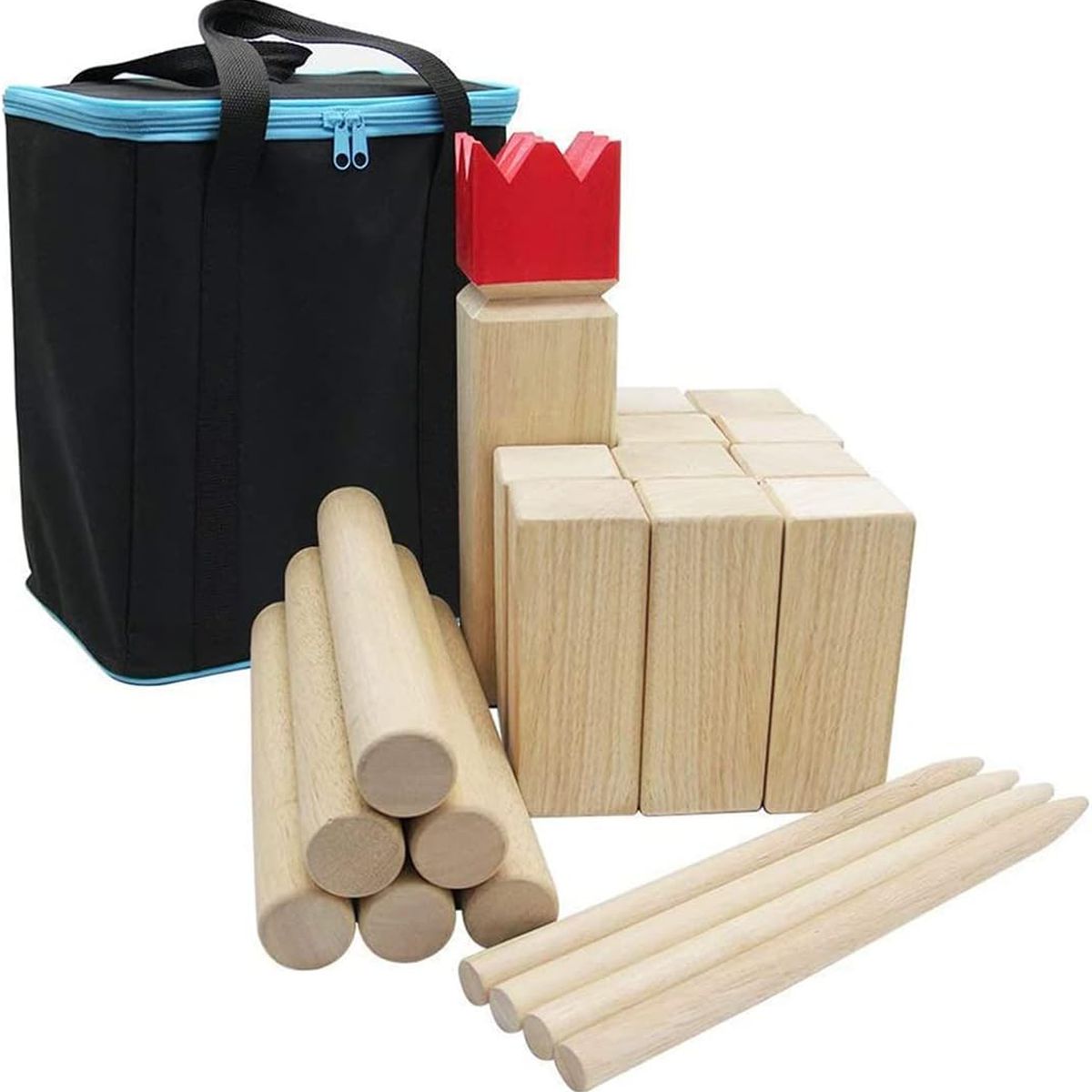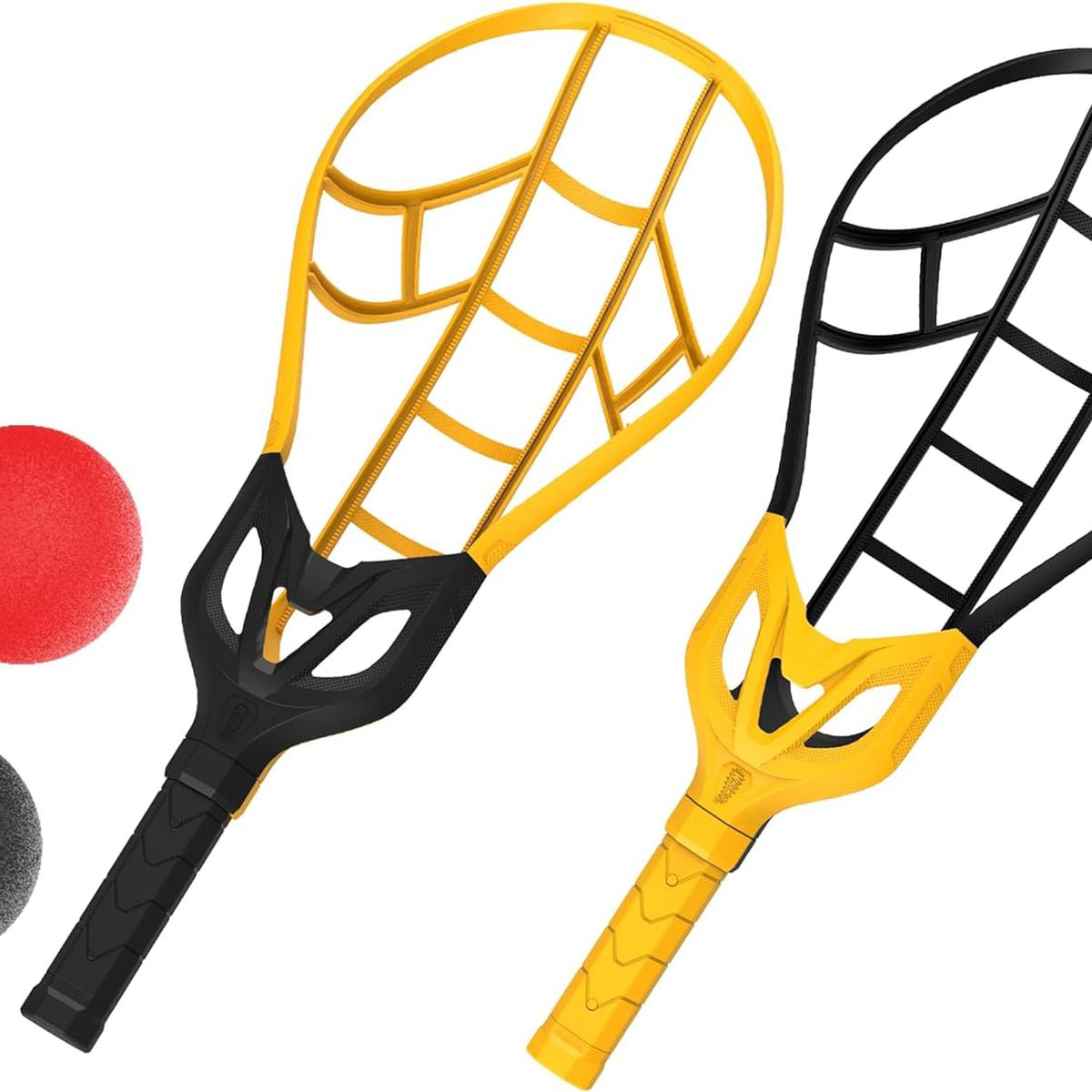It’s time for a hot garden game summer. Stay hydrated and discover a new sport in the backyard
Whether you’re grilling brats in the backyard, flipping burgers at the local park, or floating on a pontoon boat with a nice vintage from Michigan’s wine country, nothing beats a good yard game. So who wants to play another round of bags? I mean…I do. That actually sounds great.
But once I’m done playing bags, and before we wander off to where Dale saw that one run-down old frisbee golf course, I’d like to try some new yard games. So I asked around the Polygon Slack for recommendations. This is what came back.
Ladder ball
Do you want to enjoy a simple throwing game with your friends and family not need good aim? I have got you. Ladderball is a simple and silly throwing game, but instead of individual balls or bean bags, it’s two balls connected with about six inches of string between them. So when you throw the ball, it spins through the air in a semi-unpredictable way (at least that’s what happens when I throw it, because I’m terrible at throwing things in the direction I want to throw them).
To play the game, place the vertical ladders a few feet apart and then split them into two teams. My family usually plays one-on-one for quick games with plenty of time for snacks between rounds. One person from each team stands at one ladder while the teams alternate throwing their three balls to the other ladder, aiming for the highest rung. The string between the balls often wraps around one rung, but the game becomes fun when you realize how easy it is to knock your pieces (or your opponent’s) off the rungs. When that round is over, go to the other ladder.
The top step is worth three points, the middle two and the bottom one. Most people play ladderball by seeing who can get to 10 points the fastest. In addition to family-friendly fun, I also love this game because the balls are relatively soft, making it easy to play barefoot by the pool without fear of being lobbed. It’s also drunk-people-friendly, if that’s your thing. —Zoe Hanna
Kubb
Kubb’s nickname, “Viking Chess,” doubles as an elevator pitch. The lawn game – where players stand on either side of a rectangle and throw bats at wooden pylons – combines the strategy (if not quite the depth) of its intoxicated board game companions with the Scandinavian pleasure of hitting hard things together. Like many great garden games, the rules are tricky to explain, yet easy to play through watching people play.
With that in mind, think of starting a kubb contest like starting a dance party: the hard part is getting the first person to join in. But once a few people start playing, you can expect friends and neighbors to ask for their turn. throw one stick at another. As these newcomers snack and immerse themselves in the game, they discover tactics like where to place skulls on the field. Whether you want to gamble on long shots or take easier short-range targets. Matches can last minutes or hours, with power changing within a few throws of the baton.
There is one more detail that helps Kubb earn his Viking chess shorthand. It can be played entirely with one hand, perfect for adults who enjoy a game best when they have some mead with them. —Chris Plante
Roundnet, also called Spikeball

While the history of some beloved garden games goes back hundreds, if not thousands, of years, there is one that came to life much more recently – around 1989, in fact. I’m not talking about pickle. Actually, I never talk about pickleball. Instead, I’m talking about Spikeball, also known as Roundnet.
Jeff Knurek is credited with creating Roundnet in 1989. In it, players gather at a circular trampoline-style net and pass a ball back and forth between two teams. The game is usually played 2v2 or 3v3. Either way, the action is fast and furious. Can you play the game sitting down with a beer in hand? Sure, but it’s a lot more fun to tear it up barefoot on the beach and get a little crazy if you can.
Spikeball’s entrepreneurs toyed around with the idea in the 2000s, which led to a successful performance in 2015 Shark cage. (Then Daymond John got all excited and asked for 50% of the company. The deal ultimately fell apart.) Anyway, the marketing boost indirectly helped fuel interest in a pro circuit, and this summer you’ll probably see a few games to see. played on ESPN. —Charlie Hall
Trac Ball

Wham-O, the same brand that first introduced the Hula-Hoop, has declared another winner 1976 with Trac-Ball, my personal favorite backyard game. The thing is… it’s not really a game. Technically it’s just a toy, but through trial and error I turned it into a game – a game whose rules I’m going to type out for the first time today.
Trac-Ball is loosely based on jai alai, a sport in which players use scoop-like cesta to throw balls at speeds of nearly 200 miles per hour on an indoor court. Trac-Ball uses similar biomechanics, but the reed cesta is replaced by a light plastic racket with a serrated track in it. The ball is also much lighter and hollow. Get the arm movement just right and you can create an absolutely amazing amount of rotation on that little ball, raising and bending the flight as you see fit.
My version of semi-organized Trac-Ball is a lot like Great Catch, a game that should be familiar to anyone who has ever played youth baseball. Basically, two players line up opposite each other and try to make each other look as cool as possible while catching the ball. Maybe you’re holding the ball above your opponent’s head just far enough away that they can barely reach it before it hits the ground. Or maybe you bend it so much that they have to run headlong to the right or left to intercept it before it passes them. Or maybe you slam it right into their chest, forcing them to position themselves and intercept the missile like a laser beam aimed at a Jedi. Matches go up to 15, like a short game of volleyball, but with tennis-like scores. That keeps the tension going until the last few throws.
The only trick is that scoring is all based on the honor system. It’s up to you and your opponent to call out a bad throw and score it accordingly, or to notice when you’ve missed a catch you should have – no matter how graceful you thought you looked when you it tried. —CH


